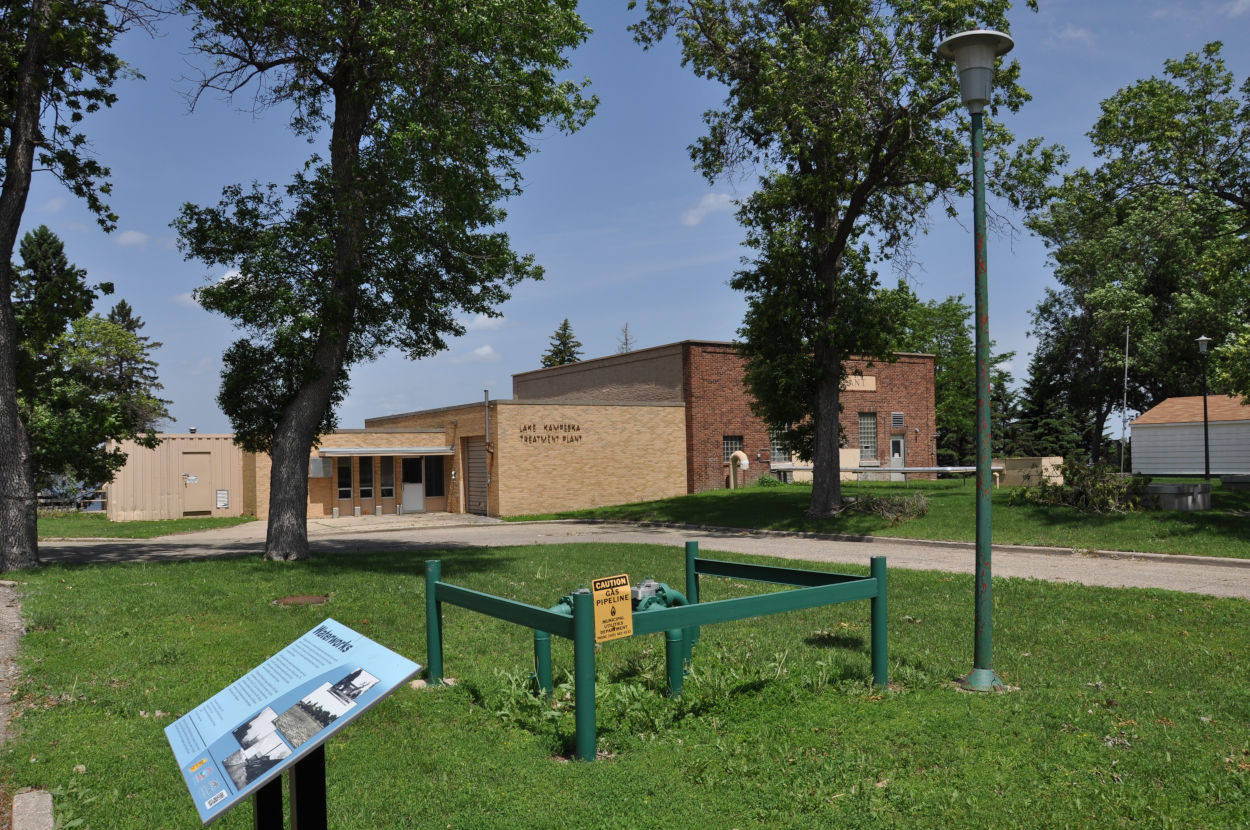Designation: Temporary Date: 2016-01-24
Lake Kampeska
South Dakota Civilian Conservation Corps (CCC) camp 2 mi NW of Watertown, SD

1933, 07/13 - 1933, 10/15, 1784V
Date Closed: 1933, 10/15
Company 1784V, the first company of WWI veterans to be organized in South Dakota, was stationed at Watertown from July 13 to October 15, 1933. It then moved to Camp F-17 (Calcite).
Organized June 16, 1933, at Fort Meade, it left there July 12. Capt. Brawner and 80 veterans boarded the Northwestern train for Watertown, leaving Lt. Haney and about 50 others to finish a conditioning program (1934).
Upon arrival, equipment and men were transported to Oakwood Park. A Dodge truck and commercial truck shuttled back and forth until night. Tents were erected as fast as they were unloaded. The kitchen was erected first, and supper was a little late (1934).
On July 15, 28 more veterans were enrolled. Two days later seven more were received from Nebraska and Lt. Haney and the detachment from Fort Meade arrived. With company strength at 170 veterans, work began July 19 on the Sioux River and Lake Kampeska (1934).
A serious situation arose, however. "The men were as free of money as a frog is of hair and of course, being strangers in town, there was no jawbone. But the Watertown American Legion came to the rescue and supplied the men's needs in the way of tobacco until the first pay was received the first of August" (1934).
The mess hall was not completed until early August and meals had to be eaten in the open. Dust, dirt, and flies did not help make the meals appetizing. However, the completion of the mess hall relieved the situation, except that noon meals were eaten in the field (1934).
First Lt. F.L. Neisius opened the camp dispensary on July 13, 1933. He was relieved by 1st Lt. L.F. Kaiser on July 21. First Lt. Harry Crawford relieved Capt. Brawner and Lt. Haney on August 4, 1933, when they returned to ROTC duties at SDSC in Brookings, SD. First Lt. Basil E Williams reported for duty on September 18, 1933, as second in command (1934).
At Watertown the company was attached to the Minnesota district with headquarters at Fort Snelling, MN. Plans were made to spend the winter in Watertown--permanent buildings were to be built. Contracts for materials had been let, and locations of buildings carefully checked. Then on September 18 a wire from Fort Snelling was received. It read, "Cease all construction--letter will follow" (1934).
From that time on the latrine rumors flew thick and fast. The letter that was to follow did not arrive until about October 10. It contained orders to entrain for Tilford on October 15 (1934).
October 15 happened to be Sunday and some of the men figured that NRA would prevent them working on Saturday and Sunday. However, those who worked hard on those 2 days seemed to be more able to get on the train than those who had been "resting" (1934).
The objective of the work project was to clean the channel of the Sioux River, divert a creek, and build a dam or two. Though work was started it is obvious that it wasn't completed. No one knows why (1934).x
xDerschied, Lyle A. "The Civilian Conservation Corps in South Dakota, 1933-1942." Brookings, SD, South Dakota State University Foundation Press, 1986. No longer in print. Available at some libraries but may not be checked-out.

| Lat / Lon always verify yourself | |
| 44.91670312565809 | -97.14729700868318 |
| GPS always verify yourself | |
| 44° 55' 0.131" N | 97° 8' 50.269" W |






